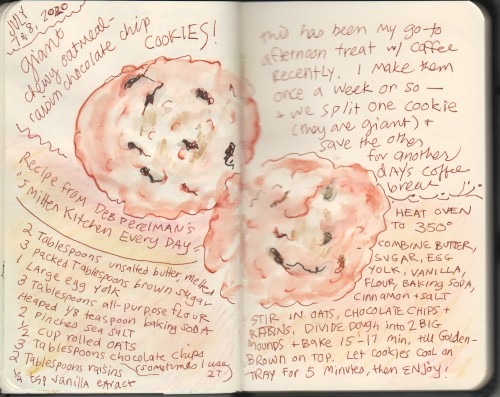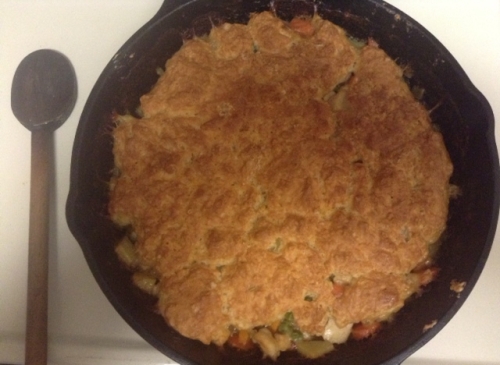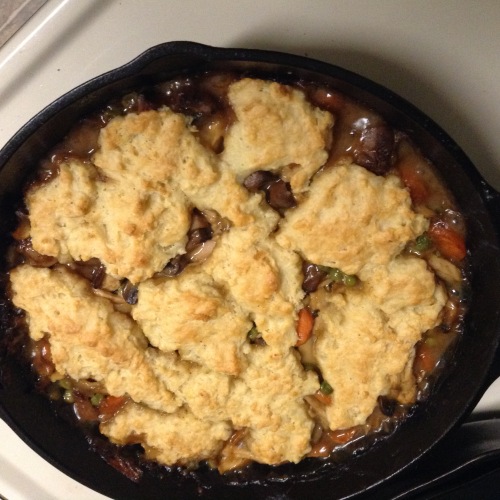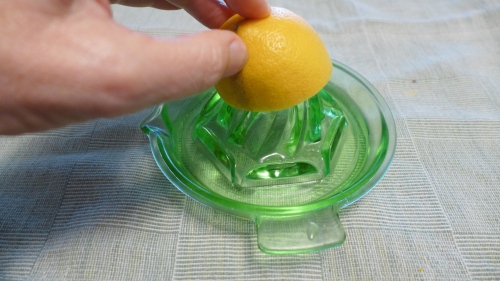ON PASSOVER, WHEN WE’RE FORBIDDEN to eat any of the five grains–wheat, oats spelt, rye, barley — except in the form of matzo, naturally a number of specific recipes involving matzo developed. I’ve been thinking about all the food traditions I grew up with on this holiday, realizing that I make an effort to keep some of them, fail to keep others and toss some away without regret.
For example, I do make kneidlach (matzo balls) for a chicken or vegetarian soup and matzo brei for a special breakfast, but I don’t make a roasted turkey with my mother’s wonderful matzo-mushroom stuffing. I fail to make an authentic fermented beet borscht as my Baba (my mother’s mother) did — but come to think of it, I don’t remember my mother making this either. Perhaps she made it before I was of an age to remember, and gave it up. She let Manischewitz handle the borscht-making and served the ruby-colored soup hot or cold, pouring it into bowls in which we’d crumbled matzo pieces and topping it with a dollop of sour cream, great for a Passover lunch.
And despite my fond memories of making sponge cake with my mother for the Seder dinner — besides the matzo meal, nine eggs were required, with silky-beaten yolks and whipped egg whites in the batter, and a frosting of egg whites and honey — I prefer my own custom of making flourless chocolate walnut torte.
One of my favorite Passover matzo traditions is one that my father introduced, a simple European treat that he would make nearly every day of the eight-day holiday, starting on the first morning: Matzo Coffee. We knew by its German name, Matzo Kaffee. Or, in a more personal rendition, Matzo Caffee a la Dad.

Passover in Chicago, April 2000. Dad was 89 then.
Dad would break most of a sheet of matzo into his coffee cup, crunching it into small pieces, then adding sugar and milk to the cup.

Finally, he poured hot coffee into the cup, right to the brim.
The result was softened, sweetened matzo floating about in some milky coffee. We made a similar children’s version, Matzo Cocoa, which was simply broken-up matzo pieces covered with hot chocolate. Both Matzo Kaffee and Matzo Cocoa are hybrids of food-and-beverage: you take sips of the coffee or cocoa and spoon out the softened bits of flavored matzo. Mmmmm.
I admit, it’s not for everyone. It has very little nutritional value, and doesn’t hold a candle to a good coffee and buttered toast or a croissant. Most people who didn’t grow up with it look upon it with disdain, as if you had torn up a piece of toast into little pieces and tossed them into a cup of cappuccino.
It’s certainly not an essential food for Passover, but rather a minor tradition, probably born of the monotony of eating dry, unsalted matzo day after day. Whatever others thought, we loved it and had it (or the cocoa version) often, either for breakfast or for an afternoon snack. Still today, for me the taste and messy consumption of Matzo Caffee ala Dad carries so many pleasurable associations.
My father — in a play on the word Seder, which means order — insisted there was a also a certain order to be observed when making Matzo Kaffee. On the last Passover of his life, when he was 93, he wrote the instructions for each of us four children in his inimitable handwriting.

I love the “WOW!! What a TREAT!!” which captures my Dad’s vitality and almost childlike enthusiasm, while the instruction “Do NOT change order to do it o.k.” reminds me of the authoritarian side of his character.
Twelve years after he wrote it, this little card is one of my most treasured documents from my father. And, yes, of course, I’m still enjoying that special Passover treat, Matzo Caffee a la Dad.










 MY FRIEND NANCY knew that I often baked bread using
MY FRIEND NANCY knew that I often baked bread using 












